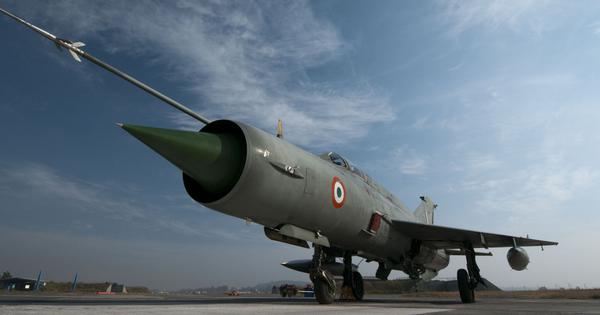The iconic MiG-21 jets have been phased out amid safety concerns and the introduction of newer aircraft.
The Indian Air Force (IAF) officially retired its fleet of Mikoyan-Gurevich MiG-21 fighter jets on Friday, marking the end of an era after 62 years of service. The farewell ceremony took place in Chandigarh and was attended by key figures, including Defence Minister Rajnath Singh, Chief of Defence Staff Anil Chauhan, and the heads of the three armed services.
During the event, Singh highlighted the emotional connection many in the country feel toward the MiG-21. He described the aircraft as more than just a fighter jet, referring to it as a family member with whom many have shared a deep attachment. Singh stated, “The MiG-21 has shaped our confidence, strengthened our strategy, and helped us establish ourselves on the global stage.” He emphasized the aircraft’s resilience, noting that it had faced numerous challenges and consistently proved its capability over the years.
The MiG-21 jets, which are of Soviet origin, played significant roles in the 1971 and 1999 wars between India and Pakistan. Over the decades, the IAF inducted more than 850 MiG-21s in various variants, with a majority being manufactured domestically by Hindustan Aeronautics Limited. While other variants were phased out over time, the upgraded MiG-21 Bison was the last to retire during the ceremony.
Despite its long-standing service, the MiG-21 has been associated with safety concerns in recent years. It gained a notorious reputation as the “flying coffin” or “widow maker” due to a series of fatal accidents linked to mechanical failures often attributed to the aging aircraft. According to parliamentary data, between the financial year 1971-’72 and April 2012, over 170 pilots and 39 civilians lost their lives in more than 400 crashes and accidents involving the MiG-21. However, no official updated statistics have been released regarding incidents since then.
The retirement of the last two MiG-21 squadrons has resulted in a decrease in the IAF’s combat squadron strength, which now stands at 29, falling short of the sanctioned strength of 42 squadrons. A typical fighting squadron comprises between 16 to 18 aircraft. In response to the phasing out of the MiG-21s, the IAF is transitioning to newer aircraft, primarily the light combat aircraft Tejas, which began induction in 2016. The Tejas Mk1A variant is expected to start deliveries in October, further modernizing the IAF’s fleet.








